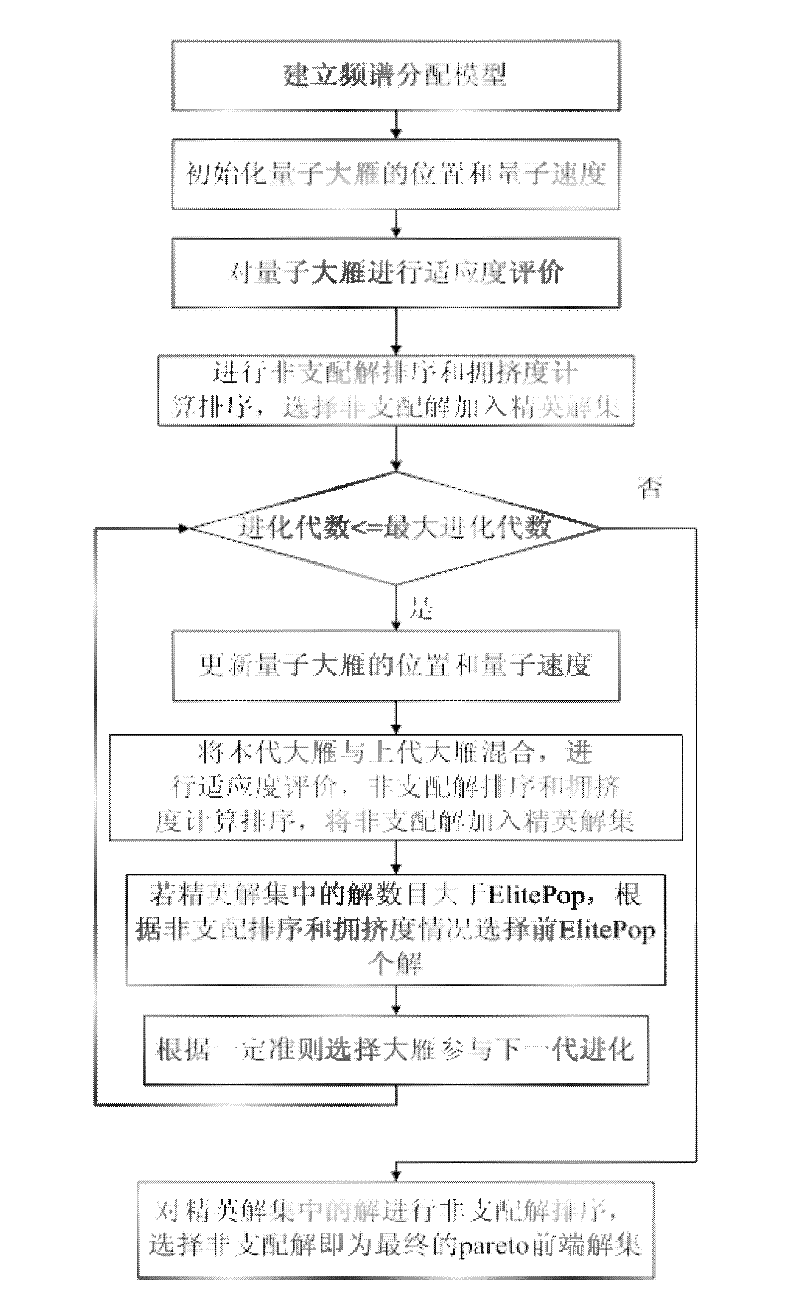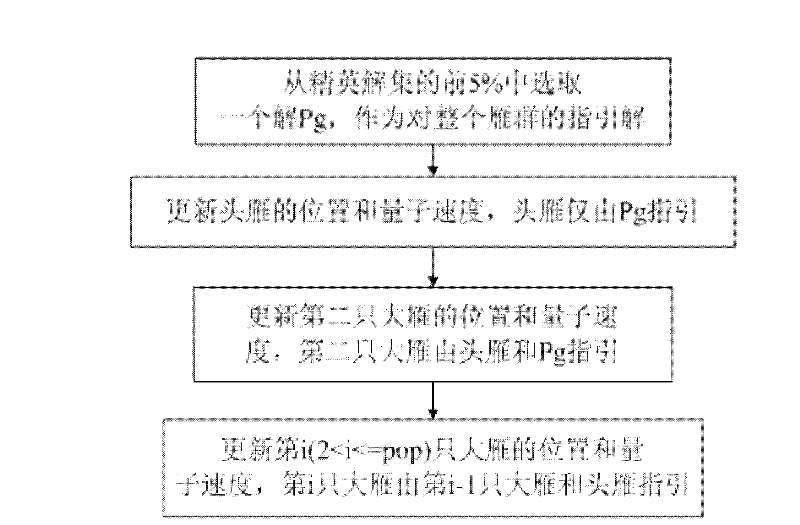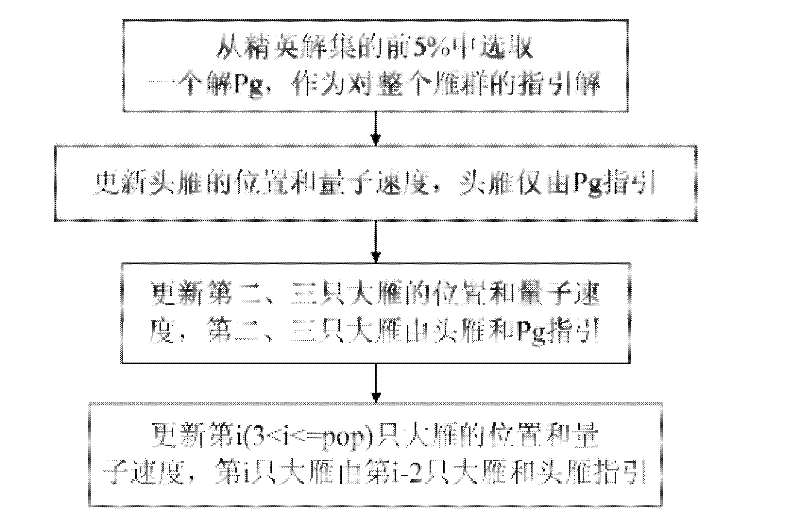Multi-target spectrum allocation method based on undisposal order preference quantum goose group algorithm
A non-dominated solution and spectrum allocation technology, which is applied in the field of multi-objective spectrum allocation based on the non-dominated solution sorting quantum goose swarm algorithm, can solve difficult problems, find the optimal solution, and cannot simultaneously consider the maximum network benefit and fairness among users sexual issues
- Summary
- Abstract
- Description
- Claims
- Application Information
AI Technical Summary
Problems solved by technology
Method used
Image
Examples
Embodiment Construction
[0041] The present invention is described in more detail below in conjunction with accompanying drawing example:
[0042] combine Figure 1-7 , the present invention is divided into the following steps:
[0043] Step 1: Establish a graph theory coloring model for cognitive radio spectrum allocation. Here, it is assumed that there are N cognitive users (labeled 1 to N) competing for the right to use M orthogonal channels (labeled 1 to M).
[0044] The spectrum allocation model of cognitive radio can be composed of available spectrum matrix, benefit matrix, interference matrix and non-interference allocation matrix.
[0045] Available spectrum matrix L={l n,m | l n,m ∈ {0, 1}} N×M is a matrix with N rows and M columns, representing the availability of the spectrum. Cognitive user n determines whether the frequency band is available by detecting the signal of the neighboring authorized user to judge whether the neighboring authorized user currently occupies the frequency ban...
PUM
 Login to View More
Login to View More Abstract
Description
Claims
Application Information
 Login to View More
Login to View More - R&D
- Intellectual Property
- Life Sciences
- Materials
- Tech Scout
- Unparalleled Data Quality
- Higher Quality Content
- 60% Fewer Hallucinations
Browse by: Latest US Patents, China's latest patents, Technical Efficacy Thesaurus, Application Domain, Technology Topic, Popular Technical Reports.
© 2025 PatSnap. All rights reserved.Legal|Privacy policy|Modern Slavery Act Transparency Statement|Sitemap|About US| Contact US: help@patsnap.com



